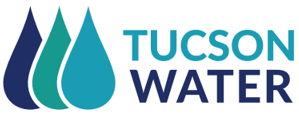TUCSON: A WATER RESILIENT CITY IN THE SOUTHWEST

As Arizona focuses on policies to meet its water challenges, Tucson has been playing the long game. Already a recognized leader in climate change resiliency, the City of Tucson has been proactive in managing and sustaining its water footprint—with growth.
Tucson has championed a diverse set of defensive initiatives over many decades, including consistently banking a portion of its Colorado River water allotment, embracing and rewarding conservation practices and utilizing recycled water for irrigation.
HISTORY OF CONSERVATION AND WATER MANAGEMENT
Water challenges have long been intertwined with the city’s history. The Santa Cruz River once flowed richly for early Tucson settlers – only to dry up by the 1940s. With a post-World War II population boom to boot, Tucson was entirely dependent on groundwater, a finite supply pumped from underground. The increased demand over the next three decades resulted in water level declines.
Tucson has shown the ability to meet each challenge and move forward:
- In 1977, Tucson Water established a “Beat the Peak” program to encourage customers to conserve water during peak times of day to delay costly water system expansions. The community embraced the ethic and made lasting changes in usage and behavior, including choosing desert landscape over grass lawns.
- In 1984, Tucson became one of the first U.S. cities to start recycling or “reclaiming” water by treating wastewater for urban irrigation and industrial use.
- In 1992, Tucson began receiving Colorado River water piped in from the Central Arizona Project canal to serve as its chief source of surface water. By the late 1990s, Tucson Water was able to master a process that collects the renewable water, mixes it with the groundwater supply and pumps it out based on demand.
- In 2008, the Mayor and Council unanimously voted to require all new homes be built with “gray,” or recycled water capabilities to promote water conservation.
CURRENT STATE OF WATER SUPPLY
At the start of 2023, a severe drought forced federal officials to cut Arizona’s share of Colorado River water by 21% this year. As Tucson prepares for this, it has already made many strong water choices:
- Tucson has banked more than five years’ worth of Colorado River water it was allotted but didn’t use because customers here historically use less water per person than other Southwest cities—approximately 80 residential GPCD (gallons per capita per day) for the last five years. That compares with Arizona’s average of 146 residential GPCD.
- In 2022, of its 144,000 acre-feet allotment from the Colorado River, Tucson provided 98,000 acre-feet (one acre-foot is equivalent to a football field covered in one foot of water) to customers and stored 20,000 acre-feet in its groundwater aquifer. It voluntarily left 26,000 acre-feet in Lake Mead to help protect the Colorado River and has offered to leave 30,000 acre-feet over the next few years.
- Tucson has established a water conservation program that gives rebates for high-efficiency toilets, washing machines and urinals, along with incentives for irrigation and fixture upgrades. This program has saved over 3.5 billion gallons of water since 2009.
- Rebates for rainwater harvesting–capturing or diverting rainwater for irrigation and plant watering–are now offered to Tucson Water customers, up to $2,000 per property.
- Responsible water management has enabled Tucson to decouple water use and growth, adding more than 200,000 customers while using the same amount of water.
Companies looking to relocate to, or expand in, Tucson should feel secure doing so because of the city’s diverse water portfolio, Kmiec said.
With a foundation of success, Tucson Water leadership is now preparing a comprehensive master plan for its water usage over the next 80 years, called OneWater 2100. The goal is to continue the city’s resiliency and ensure high-quality sustainable water sources in the future. The goal is for adoption by November 2024.
QUICK FACTS
- Tucson saves a third of its Colorado River water allotment each year, which has amounted to over five years’ worth of river water in addition to its groundwater rights.
- The city was one of the first communities in the country to reduce potable water consumption with a reclaimed system.
- Tucson has among the lowest water consumption per person of any city in the Southwest.
- Tucson’s Water Conservation Program has saved over 3.5 billion gallons of water since 2009.
- Today, Tucson’s diverse water resources consist of surface water, groundwater, recycled water and gaining in strength, rain harvesting.
Connect With Us
Want to learn more? A member of Sun Corridor Inc.’s Business Development team will respond to any written inquiry within one business day.
